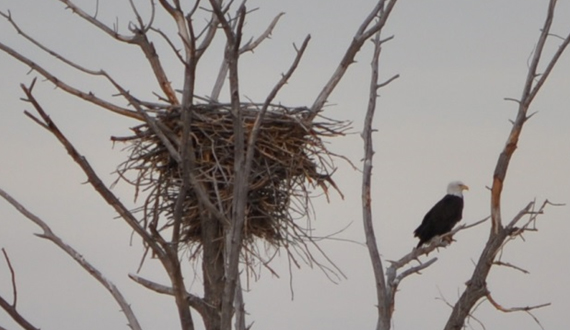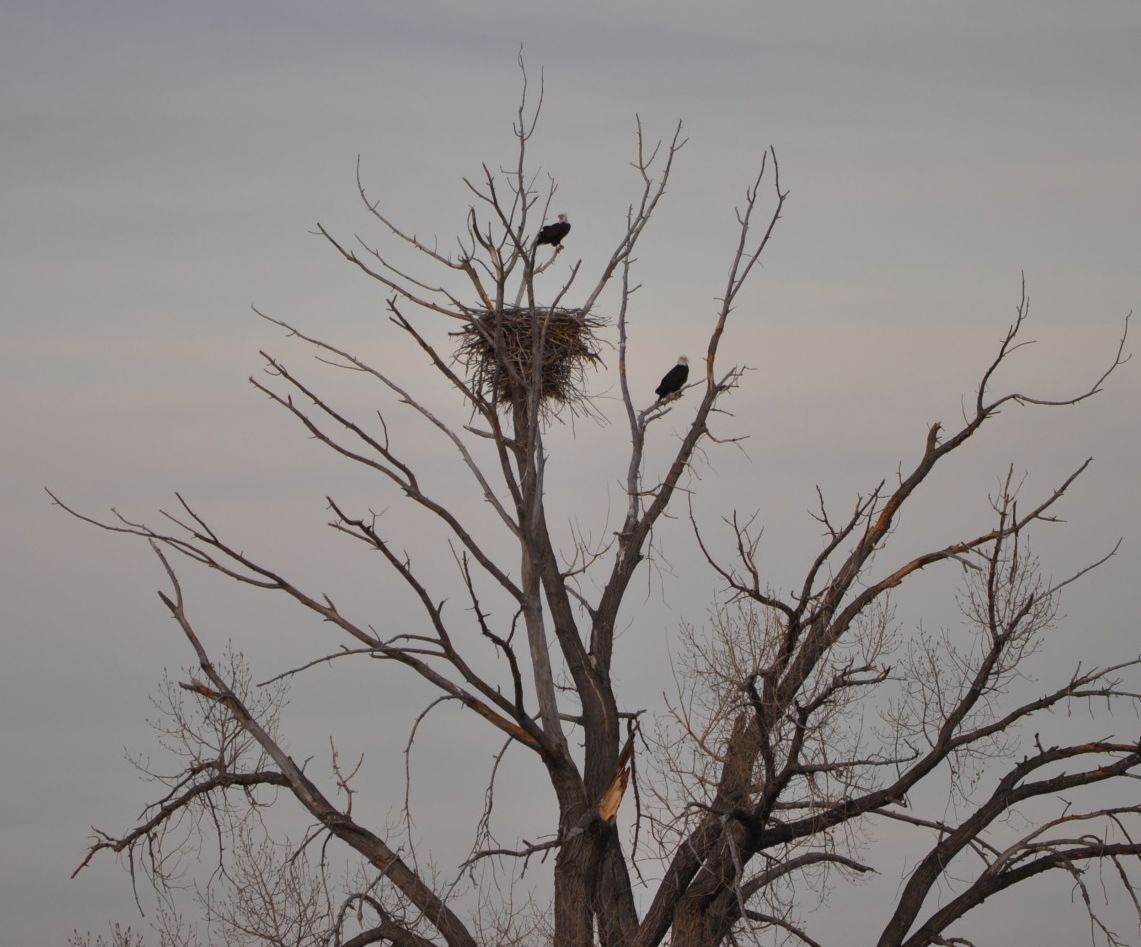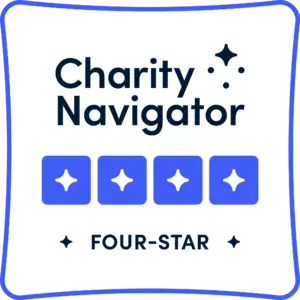Monday, May 13 update: The Bald Eagle nest at Barr Lake failed this year because of late heavy snows in April. This is an unfortunate but typical result of this type of weather. However, other Bald Eagle nests along the Front Range are doing well with eaglets surviving the snows. Also, the Osprey at Barr Lake are nesting and incubation should be taking place soon. The Bald Eagles are also visible around the Barr Lake nest, so there’s lots to see if you want to visit the lake and view spring behavior!
There are few sights in life more majestic than a Bald Eagle soaring across a clear blue sky. Fortunately, this is a far more common occurrence today than it was 40 years ago.
The Bald Eagle is a conservation success story, having teetered on the brink of extinction. In the 1700s, an estimated 300,000 to 500,000 Bald Eagles existed in the United States. In mid-1900s, the Bald Eagle population in the U.S. plummeted because of widespread loss of suitable habitat, illegal shooting, power line electrocution and the insecticide DDT. During the 1950s, only 412 nesting pairs were confirmed in the lower 48 states. In 1974, Colorado had only one known breeding pair.
The banning of DDT in the U.S. and the dedication by multiple agencies, organizations, concerned citizens and programs, such as Rocky Mountain Bird Observatory’s Bald Eagle Watch, helped lift the species from the brink of extinction. In 2007, the Bald Eagle was removed from the federal list of threatened and endangered species, with ongoing protection maintained through the Bald and Golden Eagle Protection Act, the Migratory Bird Act and the Lacey Act.

Update from 2013 Season
Today, more than 40 known breeding pairs of Bald Eagles exist in Colorado. RMBO monitors 23 of the nests through its Bald Eagle Watch program. Each year, dedicated volunteers collect crucial information on Bald Eagle nesting behavior, including courtship, incubation, feeding of nestlings and fledging data as part of this citizen science program.
As of April 11, 2013, when this post was written, 27 Bald Eagle Watchers had reported successful nesting behavior at 19 of the 23 nests. Incubation behavior had been described at 13 of those nests, and six nests had shown evidence of hatching.

History of RMBO’s Bald Eagle Watch
Bald Eagles were first observed at Barr Lake State Park northeast of Denver by Nelda Gamble in 1986. The Bald Eagle Watch program began in 1988, the same year RMBO was founded, to monitor the nest at Barr Lake with Nelda serving as a Bald Eagle Watcher and eventually taking over as coordinator from founding director Mike Carter. At that time, it was the only known eagle nest along Colorado’s Front Range and one of only 10 in the state.
Over the past 25 years, 45 Bald Eagles have successfully fledged from this nest. Currently, the eagles are incubating and the public can view the nest from a gazebo located 1.3 miles from Barr Lake State Park’s Nature Center.
Sign-up to participate as a Bald Eagle Watcher typically takes place at the end of the year to prepare for the following season, which runs from February to July. To learn more about the program, contact Kacie Miller at 303-659-4348 ext. 16 or visit the Bald Eagle Watch page.
~ Emily Snode, School Programs Coordinator







